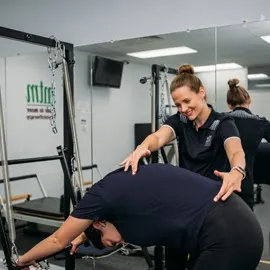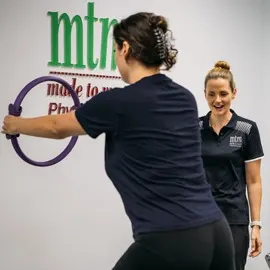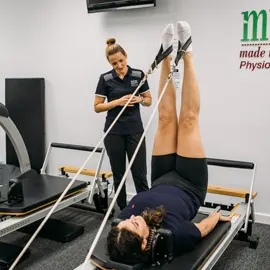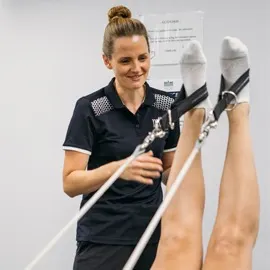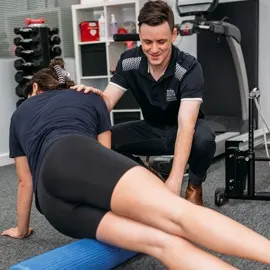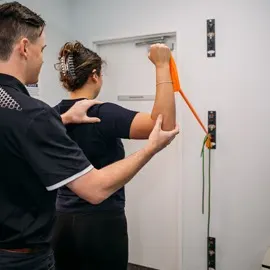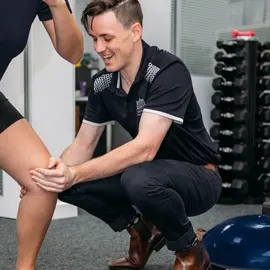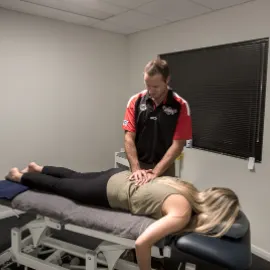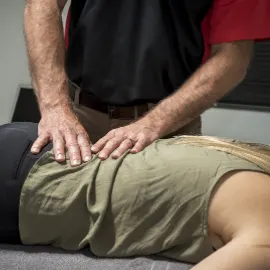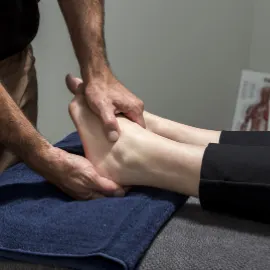Physiotherapy During Pregnancy

Visiting a physiotherapist while prenatal, pregnant, or postpartum can help both with the prevention and treatment of pain and pelvic issues caused by pregnancy as well as aid in recovery after childbirth.
Let's look at some proactive ways to keep your body strong and healthy during each stage of your pregnancy journey.
Pre-Natal
How exciting, it’s time to start planning for your brand-new bundle of joy.
During pregnancy your pelvic floor muscles can become stressed, even if you have previously had a caesarean birth. It’s never too early to start working on your posture and core muscles, including your pelvic floor. Your physio can assist you with core strength and pelvic floor exercises to help prepare your body for pregnancy.
Here is an easy exercise to start strengthening your pelvic floor before and during early pregnancy.
Identify the right muscles. The easiest way to do this is to stop urination midstream. These are your pelvic floor muscles. Can you keep your tummy relaxed and breath normally while doing this?
To perform pelvic floor exercises, contract these muscles and hold for 10 seconds. Release for 10 seconds.
Repeat this 10 times, 3 times a day.
First Trimester
During the first trimester your bodies’ hormones are changing. You may experience nausea and start to feel tired, or you may be feeling great. It’s important to listen to your body and be kind to yourself during this stage of pregnancy.
Gentle exercise such as walking, pilates and yoga can be beneficial, but if you feel too exhausted then let your body rest. It is not recommended to start a new type of high intensity exercise that you have never done before, such as running or weightlifting.
If you haven’t already, this is the perfect time to work with your physiotherapist to strengthen your core and pelvic floor muscles with a variety of techniques and exercises, in a way that is safe for you and baby.
Best exercise activities for early pregnancy:
Walking or jogging
Swimming or water aerobics
Yoga
Pilates
Spin classes
Moderate resistance exercise
Second Trimester
Your body is now starting to get used to the changing hormones and this is often referred to as ‘the golden period’ In 12-20 gentle to moderate exercise is recommended. Light weights can help to build muscle strength in both arms and legs, which will come in handy when bub arrives.
Swimming and walking are a great way to continue your path to a healthy pregnancy and birth, alongside the pelvic floor techniques that your physio would already have guided you through.
It is recommended that you avoid:
high impact exercises.
contact sports.
exercises with a high risk of falling, such as gymnastic or aerial sports.
high intensity exercises that raise heart and breathing rates to such an extent that it is difficult to speak.
exercises that place jarring pressure on the pelvis and torso, such as horseback riding.
exercises or environments that increase the risk of overheating.
Third Trimester
As your weight increases the effects of Relaxin hormone may be more noticeable. The effects of Relaxin are most concentrated around the pelvic region, so you may develop lower back pain or pain in the front or back of your pelvis.
Be sure to continue your swimming, walking and pelvic floor exercises where possible. Your physiotherapist is trained to help so don’t suffer in silence.
Post-Natal
Congratulations, baby is here!
If you have had a difficult birth or you are struggling with any pelvic issues after birth it is always a good idea to get checked over by your physiotherapist. This will give you peace of mind but can also get any issues treated early if required.
Although Relaxin levels drop significantly after you give birth, your joints and ligaments can take 6 or more months to return to normal, so it goes without saying that heavy lifting and returning to excessive exercises is a no go.
If you’ve had a caesarean, then you need to be extra careful in the first 6 weeks. However, pelvic floor and deep abdominal muscle exercises can be started early under the guidance of your physiotherapist.
Other common problems in the post-natal period include neck and shoulder pain from feeding and carrying baby, carpal tunnel, thumb pain, prolapse symptoms and incontinence. See your physiotherapist as soon as possible to ensure an accurate diagnosis and management plan.
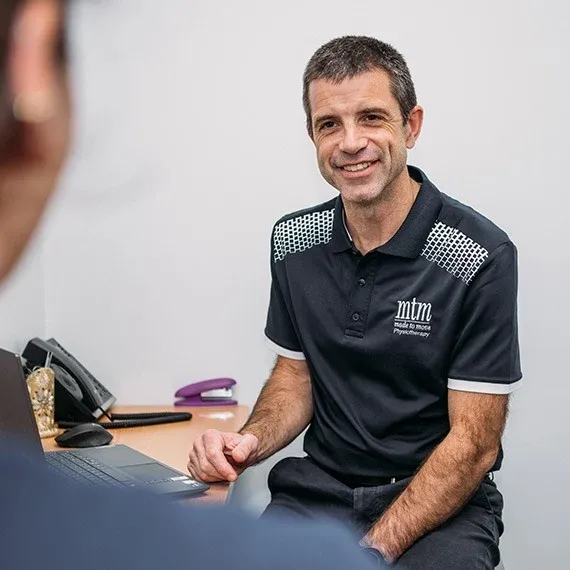
Ask a Physio
Not sure whether you are appropriate for Physiotherapy?
Fill out the form and one of our physiotherapists will be in touch with you within 24 hours.











